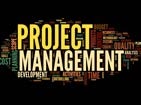I hate meetings. I feel like I shouldn’t , but I do. I especially hate breaking out into little groups and discussing things, and then getting back into the big group, and having to go on and on about what all the little groups discussed. I hear the phrase “breakout group,” and I start to break out. It always seems to be a tedious, superficial exercise, with everybody in the breakout group hoping he or she won’t be the one who has to provide the pseudo-meaningful encapsulation of what the little group talked about when everybody gets back into the big group.
I also hate “brainstorming” sessions. That sounds kind of ignorant, but it’s the truth. My brain doesn’t storm all that much, and I don’t have the patience to listen to the drizzle that most people seem to think is a downpour of brilliance as they take full advantage of having a captive audience. The raindrops of drivel tend to lull me to sleep. I’m not the least bit proud of that, but it’s undeniable.
So I was elated to learn that brainstorming sessions have at least been recognized by others as having the potential to become the unpleasant and unproductive nightmares they’ve been in my experience. Mitchell Rigie and Keith Harmeyer, co-authors of “SmartStorming: The Game-Changing Process for Generating Bigger, Better Ideas,” must have been forced to weather some of the same brainstorming sessions that I’ve had to sit through. They’ve been captives in the audience that endured the guy who never shuts up, the woman who overcomplicates everything, and the bored, aloof dunce like me who never contributes anything. Here are their suggestions for dealing with these personality types, and for making brainstorming sessions less painful and more productive:
Forget the invitation. The simplest way to avoid problematic personalities in a session is not to invite them in the first place. If it’s the boss or a senior-ranking person, assure him or her that you will share any good ideas the group generates afterward. Or here’s a novel idea: You might simply tell the truth. Tell the boss that other session participants may be intimidated by her presence in the room. And since she certainly wants the idea session to be as productive as possible, it may be best if she waits to join the group until the end, when ideas have been developed and selected.
Establish the game rules. Introducing a few rules at the start of a session can help eliminate, or at least significantly minimize, disruptive behavior problems. Some popular and effective brainstorming rules are to suspend all judgment; to recognize that there’s no such thing as a bad idea; to go for quantity, not quality; and to embrace wild, audacious ideas. It is also important to reinforce the fact that brainstorming is a collaborative group effort, so the origin of any idea is irrelevant.
Impose a short talking moratorium. If a participant is dominating the session, being overly negative or judgmental, or being an attention hog, quickly shift gears and introduce a nonverbal brainstorming exercise. For example, ask everyone to silently write down five ideas and then read their favorite aloud.
Segregate strong personalities. A great tactic for managing strong personalities is to divide the group into smaller teams of three. Deliberately assign any disruptive personality types to the same team, and watch the sparks fly. Surprisingly, strong personalities often get along with one another in a productive way. Have these teams develop ideas, and then take turns sharing the best ideas with the whole room.
Create a self-policing group. Explain early in the session that if anyone exhibits any type of negative or judgmental behavior, he or she is to be bombarded mercilessly by the group with crumpled paper balls. Make a game out of it. Encourage everyone in the room to participate in order to create a self-policing environment. While it may seem silly, this technique is a playful, good-natured way to minimize transgressions and allow the group itself to enforce the “no judgment” rule.
Engage in silent idea voting. Evaluating and selecting ideas can become problematic when strongly opinionated individuals assert their preferences or biases. Instead of ideas being selected based on merit, the evaluation process can devolve into a Darwinian contest for favorites. Using a silent voting technique can help eliminate coercion and level the playing field for everyone to vote. Instruct participants to silently cast their votes by placing colored dots next to each of the ideas they feel most successfully address the challenge. You can use other methods, such as a secret ballot—provide the participants with a numbered list of the ideas, and ask them to circle the numbers of the ideas they think best address the challenge.
Invite a dream team instead of the usual suspects. When planning your next brainstorm, why not invite your dream team? This group would be made up of knowledgeable individuals who possess a collaborative, can-do attitude—even if they are typically far removed from the project at hand. Let the usual suspects, the mixed bag of colleagues or teammates you usually invite by default, sit the session out. Shaking things up can have a dramatic impact on a group’s ability to collaborate freely, share, discuss, and build upon one another’s ideas. This is how innovative solutions are born.



